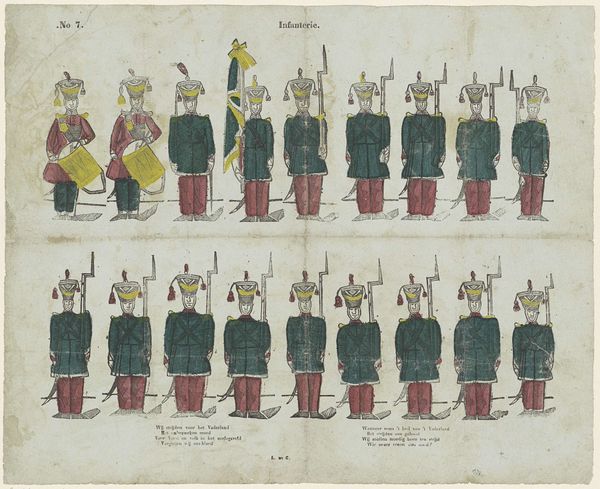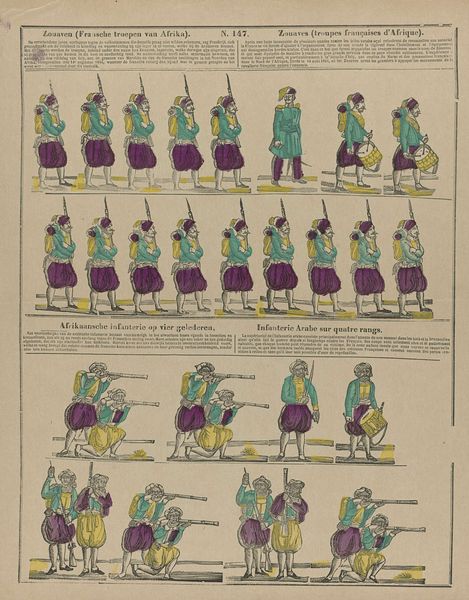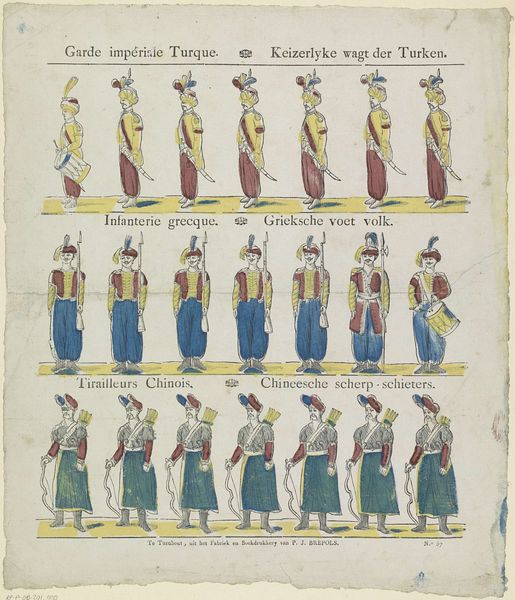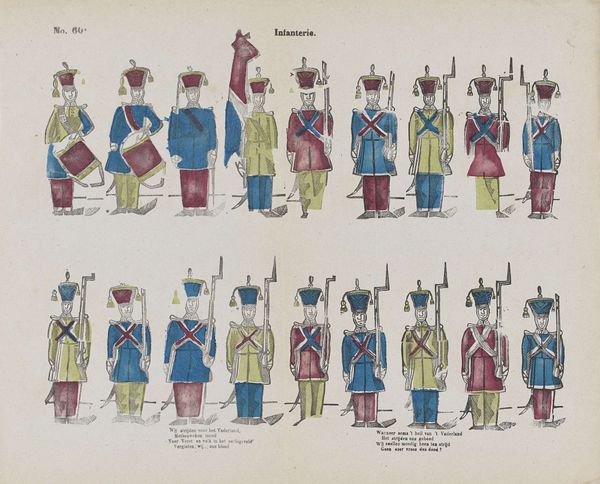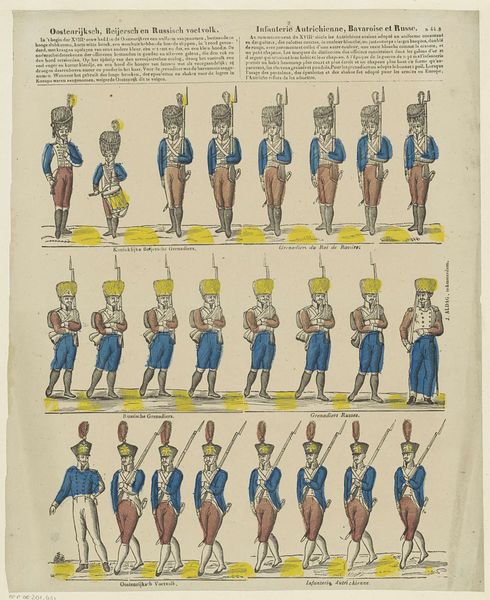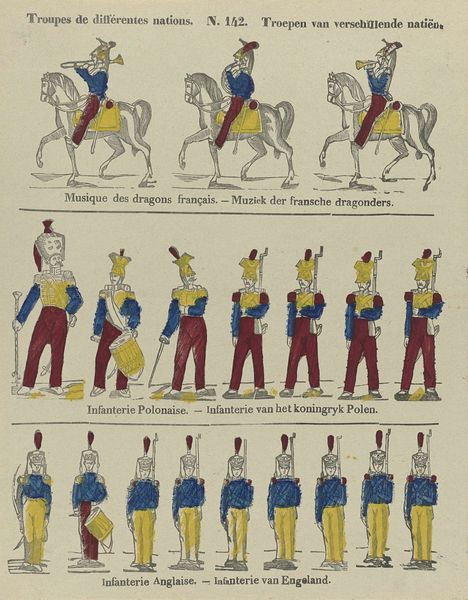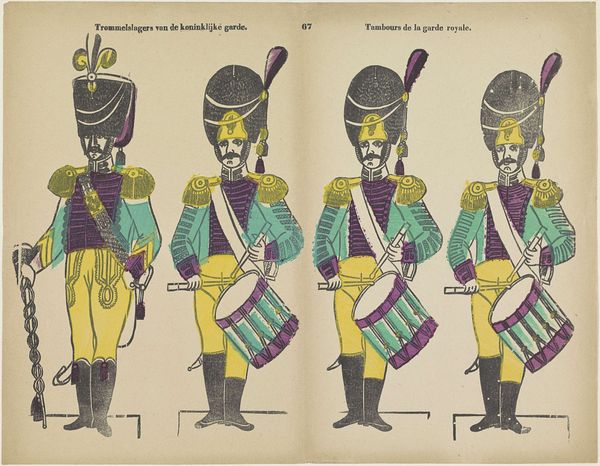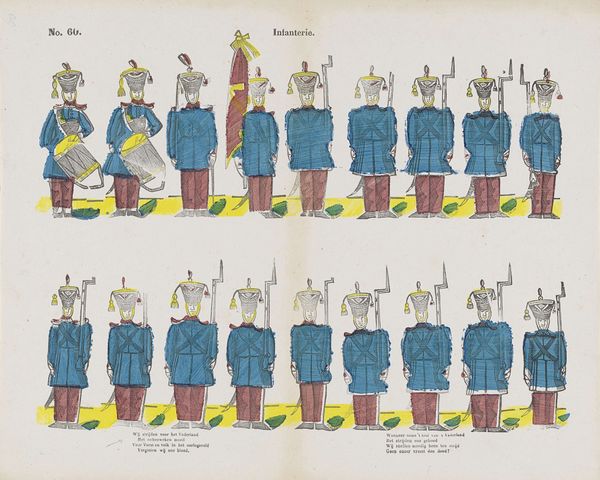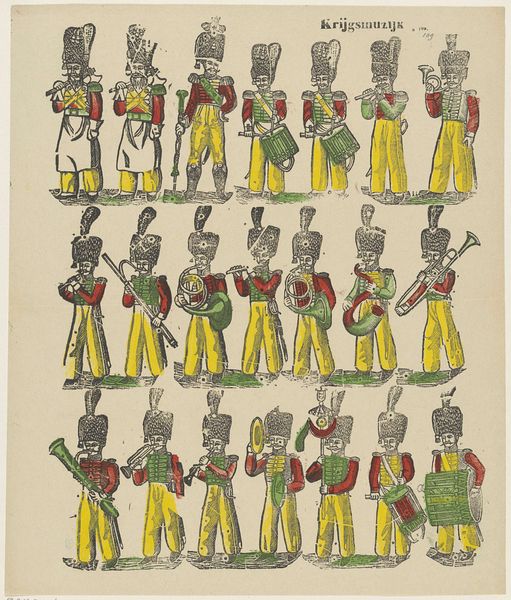
Lijfwacht van den onder-koning van Egypte / Garde du vice-roi d'Egypte / geregelde infanterie van Algiers / Infanterie régulière en Algérie 1800 - 1833
0:00
0:00
lithograph, print
#
narrative-art
#
lithograph
# print
#
figuration
#
islamic-art
#
history-painting
Dimensions: height 383 mm, width 304 mm
Copyright: Rijks Museum: Open Domain
Curator: Here we have a lithograph print, created sometime between 1800 and 1833 by Philippus Jacobus Brepols, titled "Lifeguard of the Viceroy of Egypt / Regular Infantry in Algiers," housed in the Rijksmuseum. It depicts rows of soldiers, quite stylized. What strikes you about it? Editor: Well, besides the interesting uniforms, I notice the clear depiction of labor and the materials needed to produce and clothe an army, from textiles to instruments. Given your Materialist lens, what details do you find most telling regarding the creation of such materials in the 19th century, considering Egypt and Algeria's place in the global market? Curator: Precisely! Think about the colonial context. Who controls the production, and who benefits? The lithographic process itself is crucial. Prints like these were often made for mass consumption, showcasing military strength, but also illustrating and reinforcing colonial power dynamics. Consider the origin of the materials used for the uniforms; are they locally sourced or imported? Who are the labourers involved in manufacturing, sewing and assembly? Editor: That makes me consider what type of audience it was created for. It seems that it intends to convey a very standardized idea of military organization, and those striking uniforms—the distinct colors, styles, weapons—seem aimed at projecting an image of order and control, while possibly being used for political messaging or simple marketing for a global trade partner. Curator: Absolutely. It served both practical and ideological functions. It not only documented different army uniforms of that time, but in doing so, naturalized colonial power. Consider how this image circulated; Was it widely available? Who had access? How would that influence how this piece of art affected opinions on Colonial projects and relationships in Egypt and Algeria? Editor: It’s interesting to see how analyzing the material production and intended consumption of the piece opens up a conversation about power, labor, and the spread of colonial imagery. Curator: Indeed. By considering those aspects, we move beyond simply admiring the image to understanding the complex web of relationships it represents and reinforces.
Comments
No comments
Be the first to comment and join the conversation on the ultimate creative platform.


